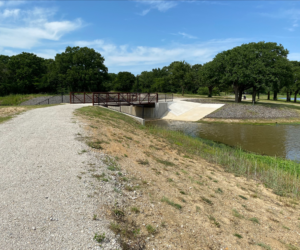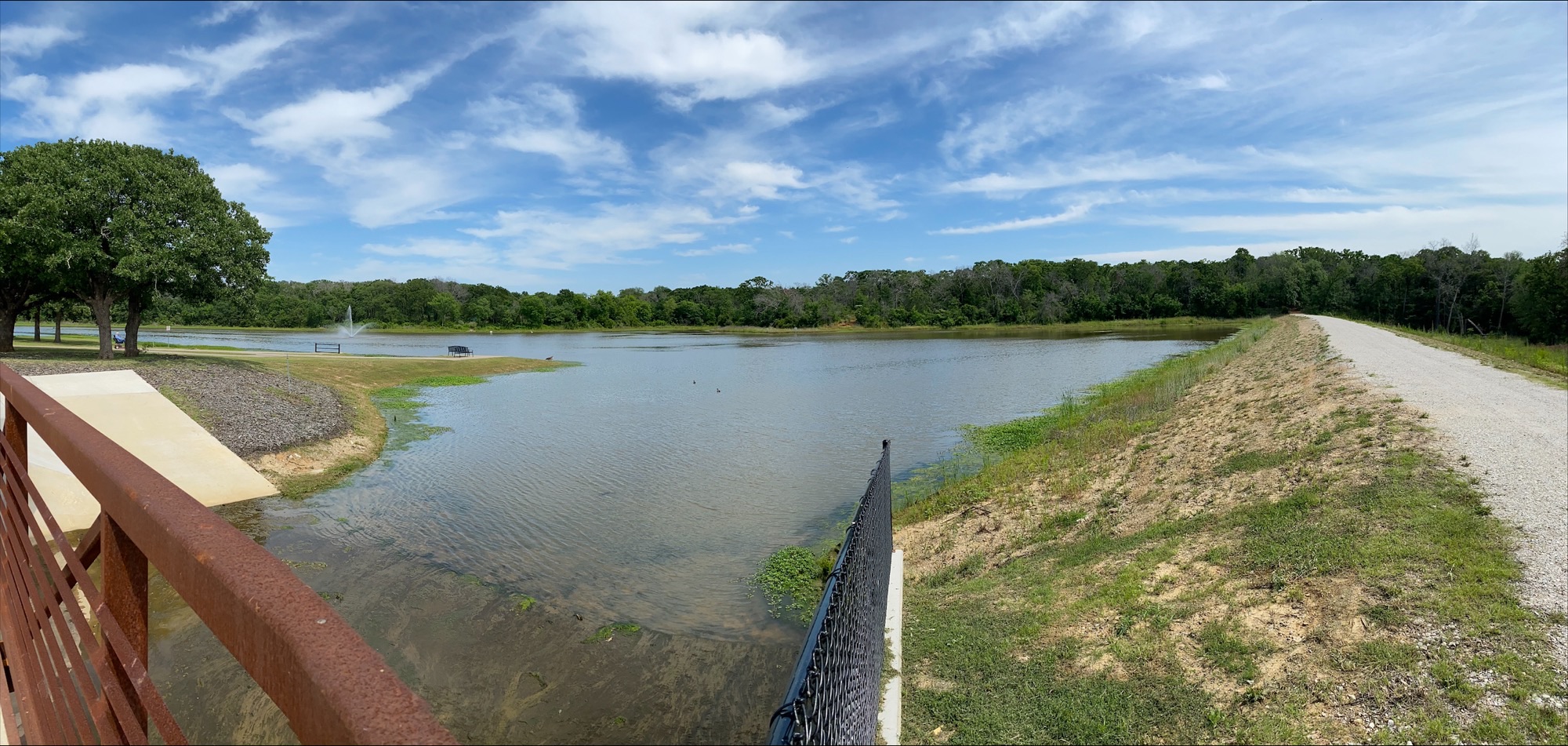Lake Forest, a 10-acre lake constructed in 1936, required significant rehabilitation due to safety and environmental concerns. Over time, the lake accumulated approximately 40,000 cubic yards of silt, and its dam faced erosion and structural issues caused by tree roots and vegetation overgrowth. Additionally, the dam did not meet modern floodplain standards or city drainage specifications, prompting a comprehensive restoration project beginning in 2018.
In 2018-19, engineers collaborated with the Texas Commission on Environmental Quality (TCEQ) and the U.S. Army Corps of Engineers to address deficiencies as related to the dam. An initial geotechnical assessment through Geotex Engineering revealed several critical issues, including:
- Failures along the embankment, spillway, and discharge channels
- Through seepage and under seepage, evidenced by visible bubbling beyond the dam’s toe
- Overgrown vegetation exacerbating structural weaknesses
The City of Denton engaged Geotex for soil borings and analysis, which confirmed the absence of a proper cutoff beneath the dam. Recommendations included constructing a clay core cutoff, removing vegetation, and reconstructing the spillway.
The $3.2 million project incorporated several key measures:
Clay Core Cutoff Construction
A 10-foot-wide clay core cutoff was created along the dam’s toe, extending its length to reduce water underseepage and enhance structural integrity.
Vegetation Removal
Crews removed large trees, brush, and other vegetation from the dam and outfall areas.
Spillway Reconstruction
A new 160-foot-long concrete spillway channel was installed, featuring a pedestrian bridge for safe access. This also addressed previous spillway failures and improved drainage capacity.
Fish Relocation and Habitat Enhancement
The city collaborated with Jagoe-Public, Magnolia Fisheries, and Texas Parks and Wildlife to relocate approximately 400 fish before dewatering the lake. Post-reconstruction, the lake was restocked and enhanced with new fish habitats and an aeration system to maintain healthy aquatic life.

The project involved multiple phases of geotechnical services and materials testing from Geotex to ensure compliance with design and construction specifications. The installation of the clay core cutoff and concrete spillway significantly improved the dam’s stability and water quality, reducing erosion and seepage issues. The aeration system enhanced oxygen levels, promoting a healthy ecosystem for fish and plant life.
The comprehensive rehabilitation of Lake Forest Dam addressed critical structural and environmental concerns, ensuring long-term stability and compliance with regulatory standards. The project not only restored the dam’s functionality but also improved the ecological health of the lake, providing a sustainable habitat for aquatic life and safe recreational space for the community. This case study exemplifies effective collaboration between municipal authorities, environmental agencies, and engineering experts to preserve vital infrastructure and natural resources.
